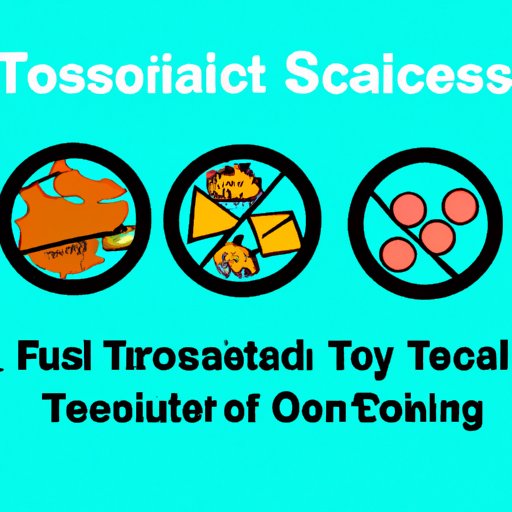Introduction
When it comes to food safety, proper handling and preparation is crucial to preventing the spread of dangerous pathogens. TCS, or time/temperature control for safety, is a term used to describe foods that require special attention to ensure they are properly handled and prepared. In this article, we’ll explore the basics of TCS foods, the risks and regulations associated with them, and best practices for handling and preparation.
The Basics of TCS Foods
TCS foods refer to any food that requires time and temperature control for safety. This includes any food that is capable of supporting the growth of dangerous bacteria if it’s not kept at the appropriate temperature. These foods are also known as potentially hazardous foods (PHFs).
Examples of TCS foods include raw or cooked meats, poultry, fish, dairy products, cooked rice and pasta, and any food containing eggs or beans.
Understanding the Risks and Regulations
There are significant health risks associated with the improper handling and preparation of TCS foods. The most common health issues related to TCS foods are bacterial foodborne illnesses like salmonella, E. coli and listeria. These can cause a range of symptoms, from nausea and vomiting to more serious outcomes like kidney failure.
There are numerous regulatory agencies that provide guidelines for the safe handling and preparation of TCS foods. These include the USDA, FDA, and state-level health departments. Complying with these regulations is not only essential for public safety, but also for avoiding legal consequences.
How TCS Foods Can Spread Dangerous Pathogens
Dangerous pathogens can easily be transmitted to TCS foods via direct contact or through the air. For example, bacteria in raw meats can easily transfer to surfaces and utensils that come into contact with cooked food or other ingredients.
Consumption of contaminated TCS foods can lead to a range of health problems, ranging from minor discomfort to severe illness and even death.
Best Practices for Handling and Preparation
The following are some of the best practices for handling and preparation of TCS foods:
- Ensure that all surfaces and utensils are clean and sanitized before coming into contact with TCS foods
- Store TCS foods at the appropriate temperature to minimize the growth of harmful bacteria
- Thaw frozen TCS foods in the refrigerator or under cold running water
- Cook TCS foods to the appropriate internal temperature to eliminate pathogens
Tips and Tricks for Safe TCS Food Handling in the Hospitality Industry
The hospitality industry faces unique challenges when it comes to TCS food handling and preparation. With so many employees handling food and the pressure to serve dishes quickly, there is a high risk of contamination and errors.
Some strategies for reducing the risk of contamination include:
- Implementing a food safety management plan that includes regular staff training and education
- Properly labeling and storing TCS food items to avoid confusion
- Requiring that employees who are sick or have infectious illnesses don’t work with food
Proper Categorization of TCS Items
It’s important to properly categorize TCS food items to ensure that they are handled and prepared safely. Some categories of TCS foods include:
- Meat and poultry
- Dairy products
- Eggs
- Raw fruits and vegetables
Conclusion
Proper handling and preparation of TCS foods is essential for public safety and avoiding legal consequences. By understanding the risks, regulations, and best practices surrounding TCS foods, you can help prevent the spread of dangerous pathogens and protect your customers and employees.
Remember to always stay vigilant when handling and preparing TCS foods, so that we can all enjoy delicious and safe meals.
